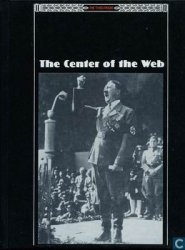THOMPSON AERONAUTICAL CORPORATION: United States (1928-1931). Thompson Aeronautical Corporation of Chicago bids on the Post Office Department’s Contract Air Mail Route No. 27 (CAM-27) to Bay City, winning the award on May 5, 1928. Tex Marshall is appointed president, with Charles Rheinstrom as traffic manager. A fleet of six Stinson SM-1 Detroiters is assembled and scheduled airmail and express flights commence on April 17-18 from Bay City to Chicago via Saginaw, Lansing, Kalamazoo, Ann Arbor, Jackson, Battle Creek, and Kalamazoo.
Preparatory to the introduction of passenger service, a new station is opened at Detroit at the beginning of 1929 and on March 2, Charles Speer, who will become well known as an American Airways marketing guru, is appointed its manager. On April 1-2, a spur is opened from Muskegon to Chicago via Grand Rapids and Kalamazoo. Employing Loening C-2C amphibians, Thompson inaugurates scheduled, one-hour return passenger service on May 14 from Detroit to Cleveland. The oneway fare is $20.
With Amelia Earhart aboard as copilot for the publicity, the initial flight departs the Motor City on schedule, but must land on Lake Erie to wait out a dense fog and misses its expected arrival time. The Ohio port city’s newspapers quickly get out editions with headlines proclaiming the loss of the famous aviatrix. Shortly after the newspapers hit the street, the plane alights near 6th Street and the embarrassed press now blames Marshall and Rheinstrom of perpetrating a public relations hoax.
Beginning on July 17, passengers are allowed to fly the multistop Michigan mail route. On August 13, the C-2C Miss Detroit, piloted by the same Cy Caldwell who had inaugurated Pan American Airways (PAA) service in 1927 and with three others aboard, suffers engine failure. Attempting a deadstick landing, Caldwell crashes into Lake Erie west of Pelee Island; the copilot, Johnny Kasper, is killed. Caldwell is blamed for the tragedy and fired.
In January 1930, winter conditions are addressed through the equipment of passenger and mailplanes with skis. Flying from Cleveland to Bay City, Michigan, on February 18, a Pitcairn PA-6 Super Mailwing suffers engine failure in bad weather near Flint, Michigan; pilot Clifford
W. March parachutes to safety.
On March 11, pilot A. H. Dewitt bails out of his PA-6, which is caught in a snowstorm at Mishawaka, Indiana. In the “Great Hangar Fire” at Chicago on June 25, a Stinson SM-1 is destroyed. Beginning on June 26, Thompson begins the use of experimental SM-1 Detroiters powered by Packard diesel engines. En route to Bay City from Cleveland on July 22, a PA-6 crashes at Huron, Ohio, in rain (one dead).
Later in the summer, mail, express, and passengers are carried on a new route from South Bend to Chicago via La Porte. On November 11, service is extended to Buffalo, New York.
On January 1, 1931, TAC is reorganized into a holding company. The airline subsidiary that emerges is named Transamerican Airlines Corporation, a small title change.




 World History
World History









